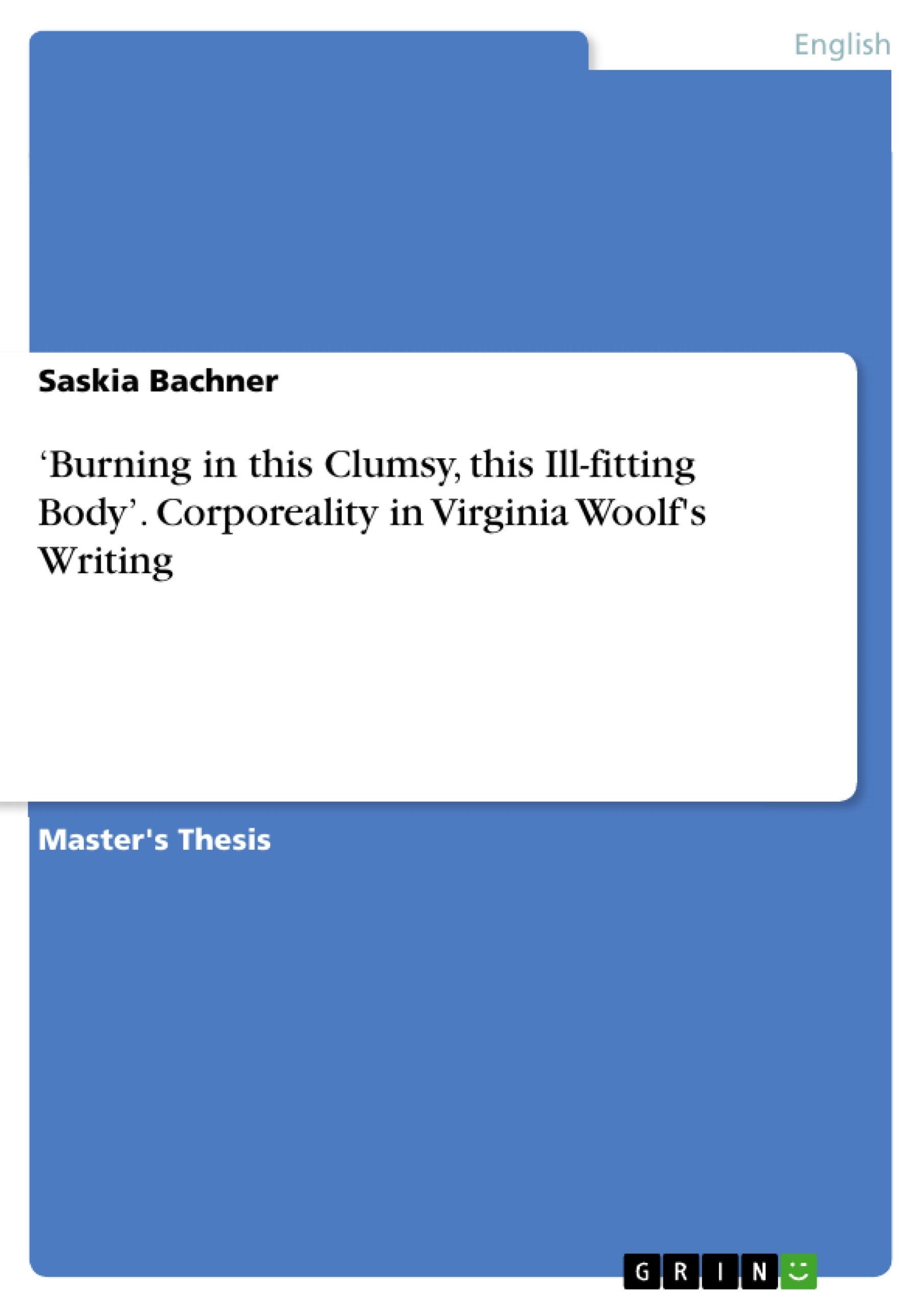After the introduction, which dwells on the relation between corporeality and spirituality, the first chapter explores how the significance of corporeality for the individual is illustrated in Woolf’s novels Mrs Dalloway and The Waves as well as in her theoretical writing. Thereby, similarities between Woolf’s writing and Merleau-Ponty’s Phenomenology of Perception are pointed out.
Chapter two examines to what extent Julia Kristeva’s theory of abjection as described in Powers of Horror is applicable to Woolf’s novels. The characters’ attitudes towards sexuality, food, illness and death are analysed.
Chapter three focuses on the social and linguistic difficulties which need to be overcome in order to write about corporeality. Woolf’s narrative craft is analysed and briefly compared to James Joyce’s writing style in Ulysses.
Inhaltsverzeichnis (Table of Contents)
- Introduction: Corporeality and Spirituality
- The Significance of Corporeality for the Individual
- The Social Meaning of Corporeality
- Corporeality and Language
- Conclusion
Zielsetzung und Themenschwerpunkte (Objectives and Key Themes)
This thesis examines the concept of corporeality in the writing of Virginia Woolf. The primary goal is to demonstrate how Woolf's novels explore the significance of the body, not only for the individual but also in relation to social constructs and linguistic limitations. The work analyzes Woolf's representations of corporeality in her major novels, particularly Mrs Dalloway and The Waves, while drawing upon her autobiographical and theoretical writings.
- The relationship between corporeality and spirituality in Woolf's work.
- The role of the body in shaping individual identity and experience.
- The social and cultural meanings attributed to the body, particularly in relation to concepts of abjection.
- The challenges of representing corporeality in language, and Woolf's use of modernist narrative techniques.
- The influence of key thinkers on Woolf's understanding of corporeality, including Descartes, Merleau-Ponty, and Kristeva.
Zusammenfassung der Kapitel (Chapter Summaries)
The first chapter explores the concept of corporeality in relation to spirituality, highlighting how Woolf challenges traditional dualistic views of the body and mind. It examines Woolf's own engagement with this theme in her novels Mrs Dalloway and The Waves, alongside her theoretical writings. Drawing upon the work of Maurice Merleau-Ponty, the chapter analyzes how corporeality shapes our perception of the world.
The second chapter delves into the social and cultural implications of corporeality through the lens of Julia Kristeva's theory of abjection. Examining Woolf's characters' responses to sexuality, food, illness, and death, the chapter demonstrates how these experiences can challenge social boundaries and create a sense of unease or disgust.
The third chapter focuses on the challenges of representing corporeality in language. Woolf's use of modernist narrative techniques, such as stream-of-consciousness and free indirect discourse, is analyzed in relation to the difficulties of capturing the embodied experience through written form. This chapter also briefly compares Woolf's writing style to that of James Joyce in Ulysses.
Schlüsselwörter (Keywords)
This thesis focuses on the themes of corporeality, spirituality, abjection, identity, and narrative technique. It examines the works of Virginia Woolf, Maurice Merleau-Ponty, Julia Kristeva, and James Joyce.
- Quote paper
- Master of Arts (MA) Saskia Bachner (Author), 2009, ‘Burning in this Clumsy, this Ill-fitting Body’. Corporeality in Virginia Woolf's Writing, Munich, GRIN Verlag, https://www.grin.com/document/351202



